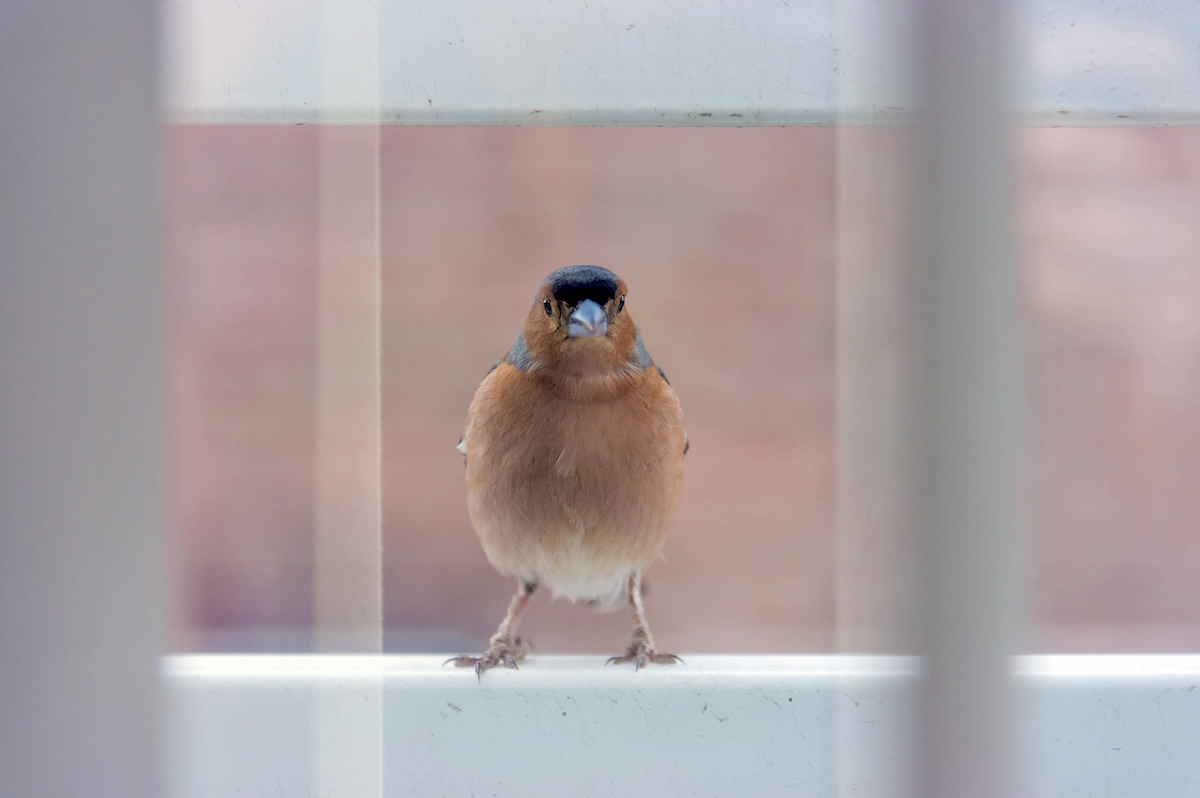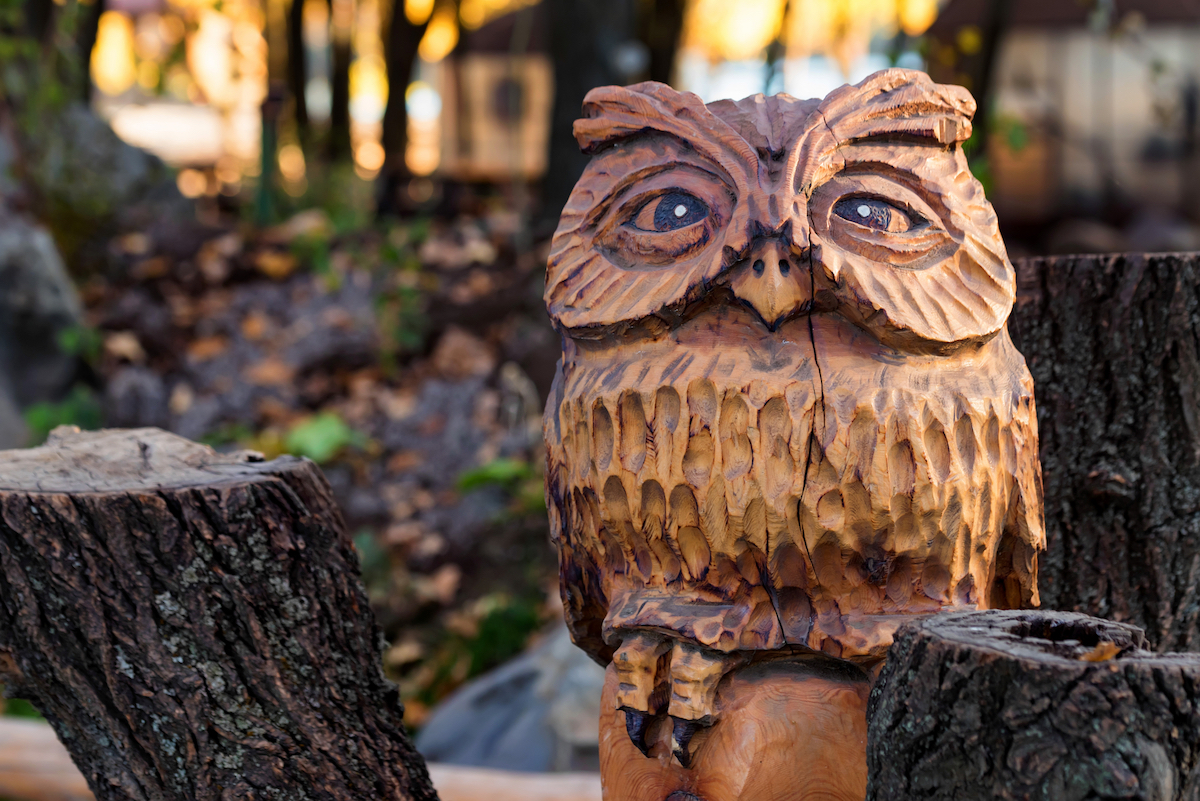

We may earn revenue from the products available on this page and participate in affiliate programs. Learn More ›
Cracking the windows is an effective way to air out your house when the weather is nice, but an open window can also be an open invitation to many unwanted visitors. Occasionally, a bird may fly through this entrance and trap itself indoors, fluttering about and frantically looking for an exit. If one makes its way into your house this season, keep calm and head to the linen closet for the only thing you need to usher it out: a flat bed sheet.
3 Steps to Getting a Bird Out of Your House
Accidentally leaving a door or window open could lead to a tricky situation: a bird in the house. At first, it may seem impossible to safely catch and release a bird that’s made its way inside your home, but by following these three simple steps, you’ll see how easy it is to get the flighty creature back to where it’s supposed to be—outside.
Step 1: Close off the area.
Once a bird enters your house, there’s no telling how it will react or how it will attempt to get out. It’s best to lock down the area it’s in, so the bird cannot easily fly to another space in your home when you move toward it. First, make sure the room is safe by turning off the ceiling fan, covering hot pots or pans, and taking your domesticated pets out of the room. If the bird is in the chimney, make sure the damper is open and firebox is unobstructed so the bird can get out.
Then, contain the area by closing interior doors and making sure small spaces such as closets and cabinets are off limits. Next, select a sole exit point for your feathered intruder before blocking off all other escape routes that may confuse it. The goal is to get the likely frightened bird to fly towards the way out on its own. The bigger the exit option, the better. If there’s only one clear way to get out, you can limit the possibility of the bird getting hurt or damaging your fixtures and furnishings.
Step 2: Coax the bird out of your home.
Start by opening the chosen exit window or door as wide as possible. Then, close all window blinds and drapes over the rest of the windows, and switch off all lights inside the house, so that the open window acts as a bright exit sign. The feathered intruder will associate this light with open air and will hopefully fly toward it. If the bird still hasn’t made any moves after some time, you may need to guide it that way.
Take a large bed sheet in both hands and hold it up at eye level (or higher) with your arms extended to make a large, flat surface. Check that the bird is nestled between you and the exit, then slowly walk forward. By creating a “wall” closing in on the bird, you can better direct it out through the window. Once the unwelcome visitor leaves, you can close the exit window or door, send the large sheet through the wash, and call it a day.
Note: If the bird is still stuck in the house after following this procedure, then it’s time to call a professional. Look up wildlife groups, bird sanctuaries, or even animal control in your local area to see if they’re able to he;p. Wildlife experts know how to handle birds without causing injury, and they have the right equipment to help the bird removal process go quickly.
Step 3: Take steps to keep birds out of your home going forward.

Now, you want to make sure this problem won’t happen again. Being mindful of open doors and windows is a no-brainer, but the following tips will also help deter birds from getting too close for comfort.
- Hang shiny objects near points of entry. Birds don’t like bright, reflecting light and won’t come near it.
- Pretend there’s a natural predator nearby. Birds will steer clear of cats, owls, and other birds of prey, so place weatherproof faux versions of these animals around common landing areas.
- Deck out your backyard with gazing balls. Birds often confuse colorful spheres for eyes and will avoid them. Place these decorative bird deterrents in flower beds or hang one or more from a tree.
- Install bird spikes. Designed to prevent feathered friends from perching on windowsills, overhangs, etc., bird spikes will help keep feathered friends moving along.
- Spray some bird repellent, such as Flock Free bird repellent. There are plenty of DIY options that feature ingredients such as chili pepper, water, and vinegar.
Final Thoughts
While it may be scary or nerve-wracking when a wild bird randomly flies into your home, it’s important to stay calm. Panicking won’t get the bird outside any quicker, so take a deep breath before containing the area and carefully shooing the bird toward the door.
FAQs
First things first, don’t panic. The more stressed you get, the more unlikely it is that you can effectively lead the bird back outside. Next, remember not to yell or chase the fowl. Instead, focus on containing the area and ensuring there’s only one way out. Then follow the steps outlined above.
For a bird that’s playing hide-and-seek in your home, you’ll first need to find it in order to get it outside. If you’ve followed Step 1 above, you at least know which room the bird is in. Next, eliminate as much noise as possible and listen intently for sounds that could indicate where the bird is hiding. Once you spot it, follow Step 2 to guide it toward the exit.
A trapped bird will typically die within a few days without food, water, or way out. Of course, the exact amount of time depends on several factors, including the size of the bird. Some trapped birds will become dehydrated and weak in just hours without water, all the more reason to swiftly follow the steps above or call a pro for assistance.
If you want to get a bird out of your house but are having little success with the bed sheet method, it’s time to call your local wildlife rehabilitation center.
